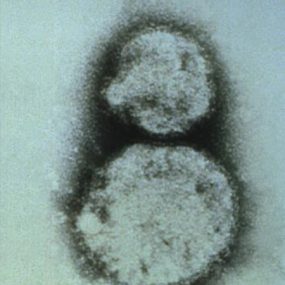Bunyavirales

Bunyavirales is an order of single-strand, spherical, enveloped RNA viruses (formerly the Bunyaviridae family). The virus families in the Bunyavirales order that cause viral hemorrhagic fevers include Phenuiviridae, Arenaviridae, Nairoviridae, and Hantaviridae. Distribution of these viruses is determined by the distribution of the vector and host species.
Discovery of Bunyavirales viruses
Rift Valley fever virus (family Phenuiviridae) was first isolated in 1930 as part of a large outbreak among sheep in East Africa. This mosquito-borne virus is present in nearly all sub-Saharan African countries. Outbreaks in people and animals have occurred in several African countries and the Arabian Peninsula.
Crimean-Congo hemorrhagic fever (CCHF) virus (family Nairoviridae) was first recognized in the Crimean Peninsula (in the south of present-day Ukraine) in an outbreak among agricultural workers in the 1940s. The same virus was isolated in 1956 from a single patient in present day Democratic Republic of Congo, giving the virus its name. The virus is spread by infected ticks or livestock, and person-to-person transmission can also occur.
Hantaviruses (family Hantaviridae) were first observed in the early 1950s. These rodent-borne viruses are divided into two groups: Old World and New World. Old World hantaviruses are primarily found in Europe and Asia, and infection can cause Hemorrhagic Fever with Renal Syndrome (HFRS). New World hantaviruses are primarily found in North, Central, and South America. Infection with New World hantaviruses can cause hantavirus pulmonary syndrome (HPS).
How viruses in the Bunyavirales order spread
These viruses can spread by arthropods (such as mosquitoes, ticks, sand flies) or rodents, and can produce mild to severe disease in animals and people. Many of the viruses in the bunyavirales order (except phleboviruses) cannot spread from person-to-person. Secondary transmission of Crimean-Congo hemorrhagic fever has occurred in healthcare settings.
Preventing Bunyavirales infections
Prevention of Bunyavirales depends on the host reservoir and how the virus spreads. Prevention measures typically target rodent or insect exclusion activities, either by use of insect repellents, bed nets, and protective clothing, or by sealing up and setting traps in homes and other buildings when a rodent infestation is discovered.